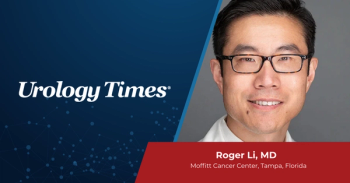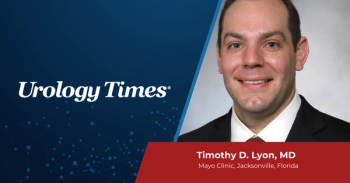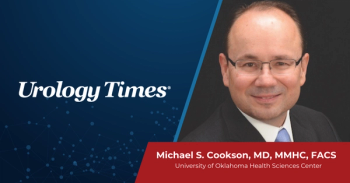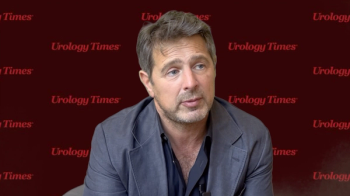
Dr. Dinney on 3-year efficacy data on nadofaragene firadenovec in NMIBC
"We concluded based on our 36-month evaluation that nadofaragene was an option for patients who had BCG-unresponsive disease," says Colin P.N. Dinney, MD.
In this video, Colin P.N. Dinney, MD, describes the background and key findings from the study, “Efficacy of intravesical nadofaragene firadenovec-vncg for patients with Bacillus Calmette-Guérin-unresponsive non-muscle-invasive bladder cancer: 36-month follow-up from a phase 3 trial,” which was presented at the 39th Annual European Association of Urology Congress in Paris, France. Dinney is the chairman of the department of urology in the division of surgery at the University of Texas MD Anderson Cancer Center in Houston, as well as the lead investigator of the phase 3 study.
Video Transcript:
So, our trial design was we treated patients every 3 months while they maintained a disease-free survival. The primary end point was complete response rate at any time, and the secondary end points were the high-grade recurrence-free survival for patients with high grade TN/T1 disease, and also the 12-month durability for patients with CIS and high-grade Ta/T1 disease. We reported a 54% CR rate. All of our CR rates were at 3 months, because we were very early in the genesis of the trial development for this indication. And I was concerned that I could put patients at jeopardy for progression and potentially deaths from bladder cancer if we retreated patients who had returned to 3 months. So, these patients all came off of trial. This is what distinguishes us from the current trials. Most trials that were retreating patients are not even assessing response until 6 months. Looking at the other trials, looking at the salvage for patients who had a second treatment at 3 months, we would have increased our CR rates from anywhere between 25% to 40% with a second treatment. This trial that we're presenting today is to look at the long-term durability of the response. The other thing I might add is that the drug is well tolerated. In the phase 3 trial, there were only 3 serious adverse events, or 2% of patients, and only 3 patients, or 2%, stopped the drug because the treatment-related adverse events. That's [from] either the treatment or procedure, and the procedure was a catheterization. So, it was very well tolerated [with] a favorable schedule.
We reported recurrence-free survival. For patients with carcinoma in situ, overall, 14% of the patients who had CIS who were treated maintained their status of 36 months. Of the patients who had a CR at 3 months, 26% of those patients maintained that status at 36 months. For patients with high-grade Ta/T1 disease, again, the high-grade recurrence free survival at 36 months was 23%, and 31% of those patients were high-grade recurrence-free at 12 months. Also important, because bladder preservation is key. The cystectomy-free survival was 57%, so more than half the patients were keeping their bladders. The overall survival was 91%. No new safety signals showed up over 36 months of follow-up. Again, I want to point out the favorable schedule which distinguishes it from others in the same space. We concluded based on our 36-month evaluation that nadofaragene was an option for patients who had BCG-unresponsive disease.
This transcription has been edited for clarity.
Newsletter
Stay current with the latest urology news and practice-changing insights — sign up now for the essential updates every urologist needs.


















